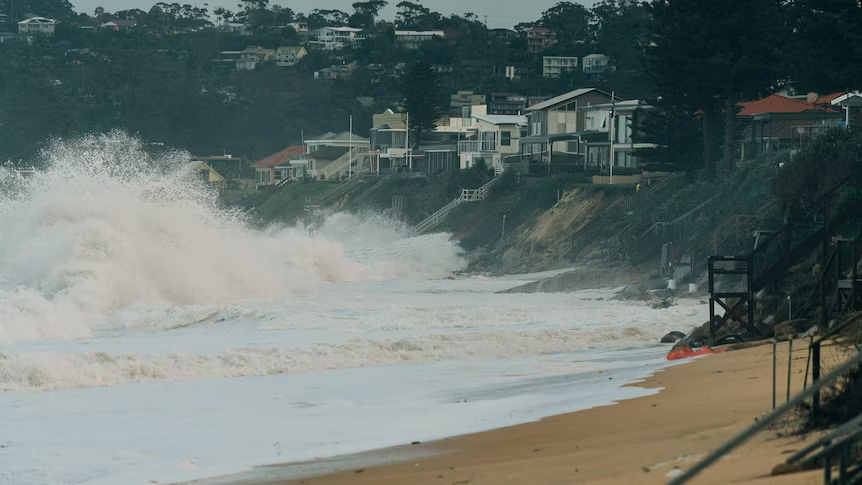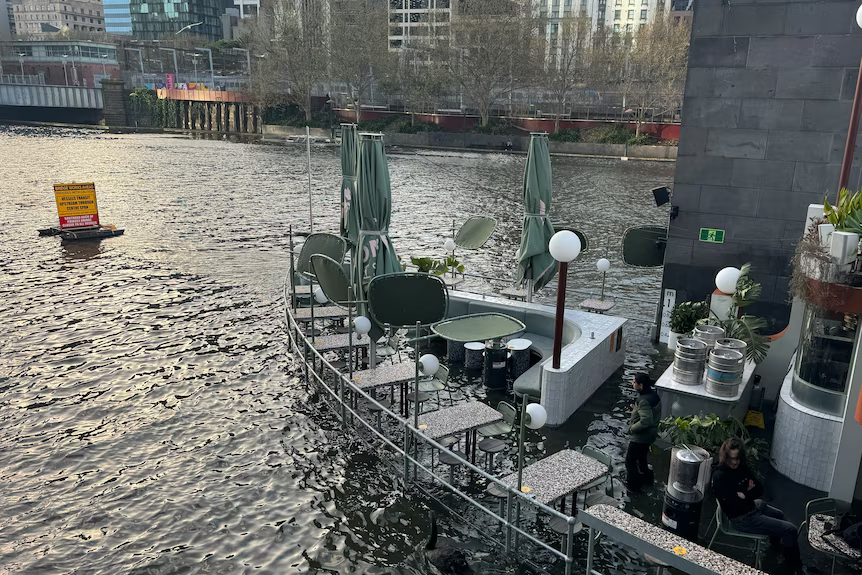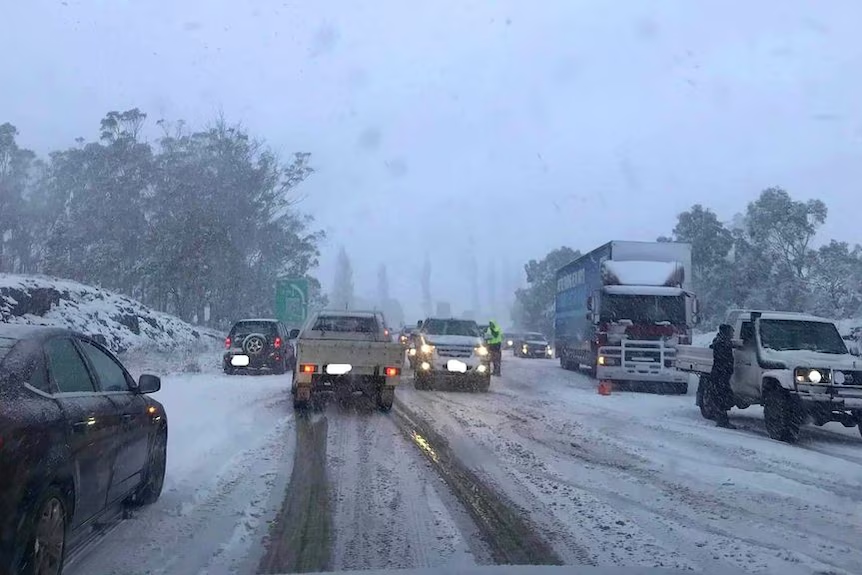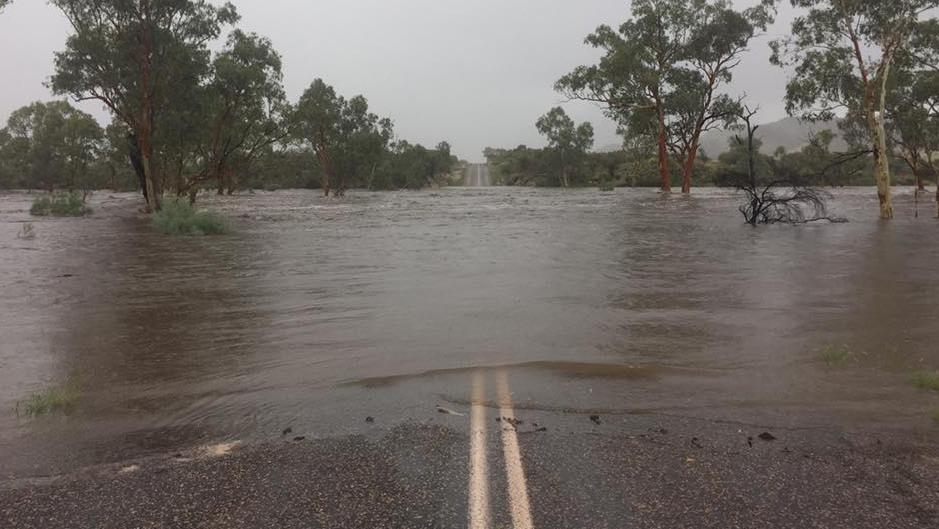Australia’s May–July 2025 Weather Outlook
As we transition into the cooler half of the year, the Bureau of Meteorology (BoM) has released its...
Australia's tourism industry, a vital contributor to the nation's economy, is under increasing threat from the impacts of severe weather. Research from Zurich’s Mandala Climate Risk Index, released earlier this month, shows that half of Australia’s tourism assets are at significant risk from natural perils and climate change.
These include critical infrastructure such as airports, as well as national parks, beaches, and cultural landmarks.
The cost of severe weather is mounting for businesses, particularly those in the tourism sector, where downtime and damage from extreme events like floods, storms, and bushfires can lead to significant financial losses. As we move into storm season in Australia, proactive planning, supported by advanced weather intelligence services like those provided by EWN, is more important than ever for safeguarding operations and mitigating risk.
 Queensland beaches regularly experience severe storms (image: shutterstock)
Queensland beaches regularly experience severe storms (image: shutterstock)
Zurich’s report highlights that climate risk varies by region, with certain states and territories more vulnerable than others based on geographical location and the type of tourism assets at risk. Below is an overview of how each state fares and which tourism sectors are most exposed:
Queensland is home to some of Australia’s most iconic tourism destinations, but it also faces the highest climate risk, with 79% of its assets falling within the top three risk categories. The state’s famous natural attractions, such as the Great Barrier Reef, Daintree Rainforest, and Whitsunday Islands, are at serious risk due to their geographic location and exposure to climate extremes like storms, floods, heatwaves, and cyclones. Queensland's tourism industry, particularly its coastal and national park assets, is vulnerable to the severe impacts of extreme weather.
The most at-risk sectors include:
With these assets integral to Queensland’s tourism economy, businesses must adopt advanced weather forecasting and alerting systems to minimise downtime, protect infrastructure, and safeguard visitors during peak periods.
 Aviation is at daily risk of delays due to severe weather events
Aviation is at daily risk of delays due to severe weather events
New South Wales (NSW) boasts a wide variety of natural and man-made tourist destinations, from the coastal beauty of Bondi Beach to the cultural landmarks of Sydney. However, the state faces diverse climate risks threatening its natural and urban tourism assets. While 60% of tourism assets in NSW are located in metropolitan areas, natural sites like the Blue Mountains, Byron Bay, and the Hunter Valley are significantly exposed to climate risks such as bushfires, floods, and extreme heat.
The most at-risk sectors include:
 Coastal erosion is a regular occurrence for many tourist-friendly beaches in NSW (Image: ABC News)
Coastal erosion is a regular occurrence for many tourist-friendly beaches in NSW (Image: ABC News)
Victoria is unique in that many of its top tourism attractions are man-made and located in metropolitan Melbourne, meaning they face relatively lower climate risk compared to other states. However, certain natural attractions in regional Victoria, such as the Great Ocean Road, the Grampians, and Phillip Island, are increasingly exposed to climate extremes like flooding, erosion, and bushfires.
The Most at-risk sectors include:
Tourism operators in Victoria should consider integrating comprehensive weather monitoring systems and forecasting to anticipate extreme weather events and adjust visitor schedules and operations accordingly.
 Restaurants & stores in Melbourne were inundated with storm water after recent storms swept Victoria (Image: ABC News)
Restaurants & stores in Melbourne were inundated with storm water after recent storms swept Victoria (Image: ABC News)
Western Australia’s tourism industry relies heavily on its natural assets, with 70% of the state’s top tourist destinations located in regional areas. National parks like Karijini, Kalbarri, and Purnululu and coastal sites like Cable Beach and Ningaloo Reef face significant climate risks from storms, wind, heat waves, and flooding.
Most at-risk sectors include:
To protect their operations, Western Australian tourism businesses should adopt proactive weather forecasting systems to monitor conditions and make data-driven decisions about visitor management and safety protocols.
 Parts of the Kimberly cut-off towns in WA in 2023, including the tourist hub of Broome (Image ABC Kimberly)
Parts of the Kimberly cut-off towns in WA in 2023, including the tourist hub of Broome (Image ABC Kimberly)
South Australia’s tourism industry is heavily reliant on its wine regions, national parks, and coastal attractions. The Barossa Valley, McLaren Vale, and Adelaide Hills are renowned for their vineyards but are also vulnerable to bushfires, extreme heat, and drought. Coastal destinations like Glenelg Beach face risks from flooding and storm surges, while the state’s national parks, including Kangaroo Island, are at risk from bushfires and heatwaves.
Most at-risk sectors include:
For South Australian businesses, adopting comprehensive weather resilience solutions such as Tomorrow.io will be crucial in maintaining resilience against these weather events, protecting both natural and man-made assets, and ensuring operational continuity year-round.

The Adelaide Hills vineyards suffered great losses in the 2019-2020 Bushfires (Image: Broadsheet)
Tasmania’s tourism industry is predominantly driven by its natural assets, including national parks, coastal landscapes, and unique wildlife. The state is well-known for its pristine environment and outdoor tourism, but it is also highly vulnerable to climate risks, particularly from flooding, bushfires, and storms. Many of Tasmania’s top attractions, such as Cradle Mountain and Freycinet National Park, are located in remote, regional areas, making them susceptible to accessibility issues during severe weather events.
Most at-risk sectors include:
Tasmania’s reliance on natural attractions means that tourism businesses must be particularly vigilant about the impacts of climate change. Implementing proactive weather monitoring systems, like those provided by Early Warning Network, can help operators prepare for extreme weather, manage risk, and ensure that visitors continue to experience the state's natural beauty in a safe and sustainable manner.
 Road conditions in Tasmania can be treacherous for tourists throughout severe weather, and include black ice, snow and fog.
Road conditions in Tasmania can be treacherous for tourists throughout severe weather, and include black ice, snow and fog.
(Image: ABC News)
The Northern Territory’s tourism industry is predominantly based around its iconic national parks, including Kakadu, Litchfield, and Uluru-Kata Tjuta. While critical to the local economy, these sites are extremely vulnerable to climate impacts such as extreme heat, flooding, and bushfires. The remote nature of these attractions also poses challenges for accessibility during severe weather events.
Most at-risk sectors include:
Businesses operating in the Northern Territory can benefit from the global coverage of Tomorrow.io's Resilience Platform. As more proprietary satellites are launched, even better outback coverage will provide real-time alerts and insights into changing conditions, allowing them to make proactive decisions about visitor safety and operational adjustments.

Flooding at Ellery Creek in Central Australia. (Image: The Courier Mail)
The financial toll of severe weather on the tourism industry is enormous. From infrastructure damage to decreased visitor numbers and reputational harm, the impact is widespread. For example, the 2019-2020 bushfires in New South Wales caused a 35% reduction in tourism revenue, a loss that continued to affect businesses well after the fires were extinguished.
Research from Victoria University shows that tourism-related businesses in affected areas lose an average of 35% of their revenue after a climate disaster. If this figure is extrapolated across Australia’s tourism industry today, up to 176,000 jobs would be at risk, with a large portion located in regional areas. Queensland, New South Wales, and Victoria would be the hardest hit.
As severe weather events worsen due to climate change, it is crucial for tourism operators to adopt proactive measures to safeguard their operations. EWN's mission is to provide critical, real-time weather intelligence to users, allowing businesses to make informed decisions and respond swiftly to minimise the impact of extreme weather.
By integrating EWN’s comprehensive services, businesses can better prepare for severe weather events, protect infrastructure, ensure the safety of visitors, and maintain business continuity. Moreover, weather intelligence can help optimise operations by providing early warnings of potential disruptions, allowing for the timely rescheduling of activities, managing resources effectively, and reducing financial losses.
As we transition into the cooler half of the year, the Bureau of Meteorology (BoM) has released its...
A powerful cold front and pre-frontal trough will sweep across Western Australia on Wednesday,...
A complex low pressure system will bring a burst of strong winds, heavy rainfall and thunderstorms...